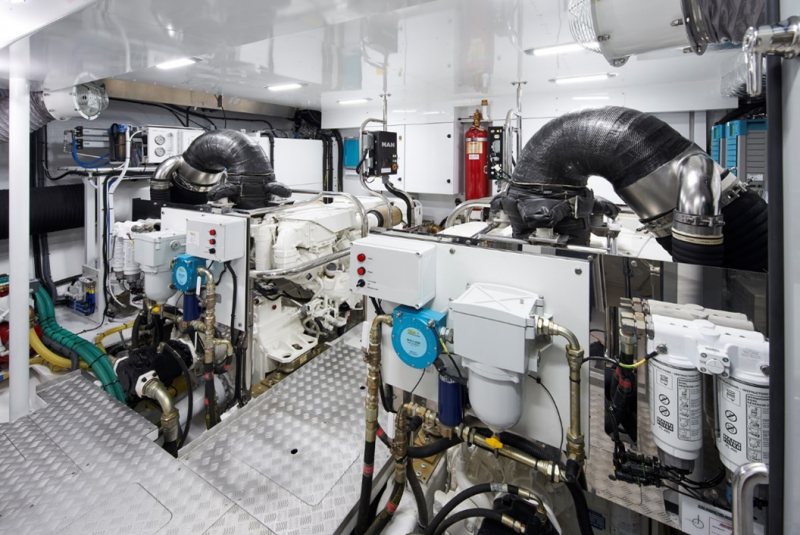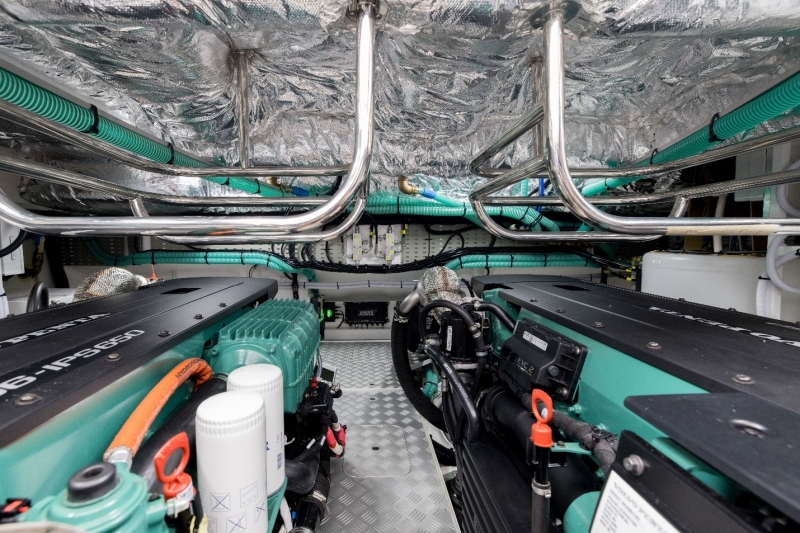Keeping Your Engine Room Safe
1st September 2022
The best skippers have always been the most vigilant ones, whether that meant being aware of threats from other vessels, changes in weather and sea conditions, or navigational hazards. But how many boat owners pay proper attention to their own engine room? This blog offers you tips for keeping your engine room safe.

In the case that something feels off on a boat, chances are it will be where there are hot, rapidly moving objects. It’s hard to predict when a mishap may take place, however you can minimize the risks.
Many of us have no intention of going into the engine room while underway but spend enough time on a boat and you will have to, whether it’s to investigate an alarm or because you sense something’s wrong. That’s why it’s commonsense practice to be prepared to enter a “live” engine room, and that means protecting yourself and crew.
Rule number one is to wear ear protection: protect your hearing or lose it. Don’t rely on earplugs (or wadded-up tissue paper); purchase a good pair of acoustical earmuffs and designate a place near the entrance where they will hang. A pair of 3M earmuffs work great and cost about $30. Also having a pair of tight-fitting mechanic gloves is a good idea because most everything in a live engine room is hot enough to burn you. For further protection from burns, wear a sweatshirt, even though the engine room temperature argues against it. Just make sure it fits snugly.

The engine(s) should be at an idle before anyone enter the engine room, but while the prop shaft may not be turning, other things will be. A main cause of injury in an engine room is encountering moving parts. Minimize the chances by avoiding loose-fitting clothing and jewelry.
Next there’s lighting. If you can’t see a potential hazard, you’ll have trouble avoiding it. Newer boats have rather good overhead lighting while many older boats do not. But engine rooms are notorious for having shadowed nooks and crannies. Overhead lighting will only take you so far. Supplement it with a flashlight, or even better a high-intensity headlamp that throws a powerful, tightly focused beam.
Unfortunately, engine room mishaps often occur when the space is unoccupied, and often the culprit is the improper handling and/or storage of flammable materials. There are certain things that should never be in an engine room, among them are spare lube oil, all solvents, and all rags, even clean ones. Engine rooms contain petroleum-based fumes that rags can absorb. If they absorb enough of it, spontaneous combustion and fire can result. Adhering to this is essential in keeping your engine room safe.
Then there are batteries. Check in case they are improperly installed, insecure mounting, or have no dedicated container (e.g., vented battery box). Another common failure is a result of the missing or misplaced positive protection – you know that annoying red plastic cap. It’s there for a reason, to prevent arcing across the battery terminals – It only takes a dropped tool – and sparks are not something you want in your engine room.
Finally, there are oil leaks, Hot oil is particularly combustible so if your engine is a dripper, place an absorbent mat under the leak and change it often. Even a smidge of oil is problematic and should be wiped up immediately. Oil and fuel leaks are a primary cause of fires, so owners need to frequently check the condition of all hoses and fittings, especially if the boat has an older engine. Rubber does not last forever, so replace aged hoses before they fail.
These basic tips will go a long way in keeping your engine room safe!
(Deane Hislop – In Partnership with Freedom Marine)


